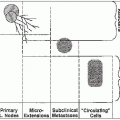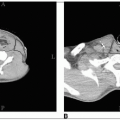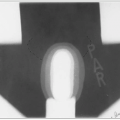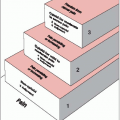The estimated number of new cases of non-Hodgkin’s lymphoma (NHL) in the United States in 2006 was 59,000, and the number of deaths was 19,000 (59). The highest incidence rate of NHL in the world is in the United States, and the lowest is in Asia (2, 94). There has been an alarming increase in the incidence of NHL over the last 4 decades, with a doubling from 1970 to 1990. However, in the last decade, the rate of increase has started to plateau (75). (See SEER Cancer Statistics Review, 1975-2007 [84]. For incidence data, see: http://seer.cancer. gov/csr/1975_2007/browse_csr.php?section=19&page=sect_19_table.05.html)
The postulated reasons for the increase are multifactorial. They include an aging population, HIV/AIDS, occupational exposure, infectious agents, and advances in diagnostic techniques (38).
There has been a significant increase in the incidence of NHL in immunocompromised patients, particularly AIDS patients and organ transplantation patients on prolonged immunosuppression (7, 48).
Epstein-Barr virus infection is associated with Burkitt’s lymphoma, posttransplantation lymphoproliferative disorders, HIV/AIDS-associated primary central nervous system lymphoma (PCNSL), T/NK cell lymphomas, and lymphomas associated with congenital deficiency (40).
Other NHL associations with infectious agents include human T-cell lymphotropic virus type 1 (HTLV-1) with T/NK cell lymphomas, and Helicobacter pylori with gastric mucosaassociated lymphoid tissue (MALT) lymphomas (82).
NHL has been linked to many occupational and environmental exposures including radiation (109).
The principal cellular component of lymphoma is the lymphocyte, and tumors may arise in any area of lymphoid aggregation, such as the lymph nodes, spleen, Waldeyer’s ring, bone marrow, gastrointestinal (GI) tract, and other tissues in which lymphoid cells may be circulating.
The median age at diagnosis is 65 years (44).
Approximately two thirds of NHLs have a nodal presentation and one third are extranodal (for Hodgkin’s disease [HD] extranodal disease is rare) (24).
Systemic B symptoms (see Chapter 40) are present in 20% to 30% of patients, and lymph nodes can undergo spontaneous regression and subsequent regrowth.
The most commonly involved nodal sites are the neck (70%), groin (60%), and axilla (50%) (100). Typically, two thirds of patients with an initially localized presentation are found to have more advanced disease upon completion of a full staging workup (14).
Nodal presentations are often follicular B-cell histology. Patients with this histology tend to run an indolent course; many patients present with advanced disease, but the median survival is typically relatively long.
The case for lymphatic contiguity is much weaker for NHL than for HD.
Epitrochlear and brachial nodes are sometimes involved, especially in patients with follicular lymphoma (FL).
The primary histology for extranodal NHL is diffuse large B-cell lymphoma (DLBCL).
The most commonly involved extranodal site is the GI tract, and the patient often presents with epigastric discomfort, abdominal pain, and/or bleeding.
Waldeyer’s ring, although rarely involved in patients with HD, is the second most common extranodal site involved in patients with NHL. A typical clinical presentation is sore throat or difficulty in swallowing.
If nodal and extranodal disease presentations have the same histology, stage, and other prognostic variables, they are often treated in a similar manner and have approximately equivalent outcomes (101).
The most striking difference between patients with HD and those with NHL is the marked increase in the incidence of bone marrow and mesenteric lymph node involvement in the latter group.
Routine staging investigations include a full physical examination with careful evaluation of all lymph node-bearing areas, liver, and spleen; complete blood cell count; erythrocyte sedimentation rate; liver function tests; lactate dehydrogenase (LDH); imaging tests; and a bone marrow biopsy.
The minimum imaging investigations include chest x-ray and computed tomography (CT) scanning of the chest, abdomen, and pelvis (90). CT scans of the head and neck are done when clinically indicated.
CT scans are useful for identifying mesenteric lymph node involvement.
CT scan of the chest reveals abnormalities in 7% to 30% of patients with initially normal chest x-rays and additional abnormalities in 25% with abnormal chest x-rays (13, 64).
The use of positron emission tomography (PET) and PET/CT imaging has significantly increased. Studies have reported that the sensitivity of PET exceeds 90%, which is significantly better than that of conventional CT at 60% to 70% (61, 93).
Patients with positive functional imaging (FDG-avidity on PET) after completion of therapy have a poor prognosis associated with an early relapse. Conversely, those patients with only abnormalities on CT that are PET-negative generally have the same prognosis as those patients with an absence of any abnormalities seen on PET or CT (60, 68, 99).
The Ann Arbor staging classification is shown in Table 40-2 and the AJCC clinical stage groups for lymphomas in Table 40-4 in Chapter 40.
The Ann Arbor staging was slightly altered in the Cotswolds modification by adding the subscript “X” to designate bulky disease. Also, the criteria for liver and spleen involvement were changed to any focal defects seen in the organ with more than two imaging modalities. Abnormal liver function tests do not play a role in staging.
In the Ann Arbor classification, Waldeyer’s ring, thymus, spleen, appendix, and Peyer’s patches of the small intestine are considered lymphatic tissues; involvement of these areas does not constitute an “E” lesion, which was defined originally as extralymphatic involvement. Because of the unique pathologic and clinical characteristics of primary lymphomas affecting these organs, many clinicians consider them as separate entities.
The Working Formulation was developed to facilitate translation between various classifications and promote the uniformity of reporting applied to B-cell (but notT-cell) lymphomas (Table 41-1).
In 1994, a group of European and American pathologists published the Revised European American Lymphoma (REAL) classification and described malignant lymphomas as a series of distinct disease entities (47).
The REAL classification recognizes three major categories of lymphoid malignancies: B-cell, T-cell, and HD, with emphasis on cytology rather than architecture, and the recognition of a wide spectrum of morphologic grades and clinical aggressiveness.
The REAL classification has been subsequently modified, mainly through the inclusion of myeloid neoplasms, to form the World Health Organization (WHO) classification or the REAL/WHO classification (81).
The WHO classification divides NHL into B- and T-cell neoplasms with 31 unique lymphomas detailed (Table 41-2) (58).
The most common pathologic types, in order of decreasing frequency, are DLBCL, FL, marginal zone lymphoma (MZL), mantle cell lymphoma (MCL), peripheral T-cell lymphoma, (PTCL), and small lymphocytic lymphoma B-cell/chronic lymphocytic leukemia (CLL) (3).
Cytogenetic abnormalities can be identified in 85% of NHL specimens.
MYC translocation and overexpression are characteristic of Burkitt’s lymphoma.
The t(14;18) translocation is observed in 90% of FLs.
A BCL-2 oncogene identified on the chromosome 18 side of the breakpoint is essential for apoptosis.
Trisomy 12 and BCL-3 translocation t(14;19) are characteristic of chronic lymphocytic leukemia.
The most common types of NHL seen in North America are follicular small cleaved cell lymphoma (20% to 30%) and diffuse large cell lymphoma (30% to 40%). The former is a lowgrade lymphoma; the latter is intermediate-grade (47).
MALT lymphomas are usually low-grade B-cell tumors. Typically, a characteristic lymphoepithelial lesion infiltrating the glandular epithelium of the mucosa is identified. MALT lymphomas arise in the stomach, thyroid, salivary glands, breast, and bladder. They show a tendency toward localized disease and toward cure with local therapy.
MCL occurs in older adults and presents with generalized disease with spleen, bone marrow, and GI tract involvement. It is generally not curable; median survival is 3 to 5 years, and there is little information on response to irradiation in stage I and II disease.
PTCLs are a heterogeneous group of T-cell neoplasms, more common in Asia, that usually affect adults and are commonly generalized at presentation. An aggressive clinical course is typical. Although potentially curable, some are resistant to existing chemotherapeutic regimens. A subtype of PTCL is intestinal T-cell lymphoma, previously called malignant histiocytosis of the intestine; it usually involves the jejunum and is associated with a history of gluten-sensitive enteropathy in approximately 50% of cases (enteropathy associated T-cell lymphoma).
Angiocentric lymphoma, which includes disorders previously known as lethal midline granuloma, nasal T-cell lymphoma, and lymphomatoid granulomatosis, is characterized by an angiocentric and angioinvasive infiltrate.
Anaplastic large cell (CD30+) lymphoma is a distinct entity with a predilection for skin involvement and generalized disease.
TABLE 41-1 Pathologic Classification of Non-Hodgkin’s Lymphoma: Working Formulation of NHLs for Clinical Usage | ||||||||||||||||||||||||||||||||||||||
|---|---|---|---|---|---|---|---|---|---|---|---|---|---|---|---|---|---|---|---|---|---|---|---|---|---|---|---|---|---|---|---|---|---|---|---|---|---|---|
| ||||||||||||||||||||||||||||||||||||||
TABLE 41-2 WHO Classification of Lymphoid Neoplasms | ||||||||||||||||||||||||
|---|---|---|---|---|---|---|---|---|---|---|---|---|---|---|---|---|---|---|---|---|---|---|---|---|
| ||||||||||||||||||||||||
Ten-year cause-specific survivals for patients with stage I, II, III, and IV FLs are 68%, 56%, 42%, and 18%, respectively (45).
Although stage is an important prognostic factor, many other factors influence the outcome in patients with NHL.
The International Prognostic Index (IPI) is based on patient age (<60 years versus greater than 60 years), serum LDH (normal versus elevated), performance status (Eastern Cooperative Oncology Group [ECOG] 0 or 1 versus 2 to 4), stage (I to II versus III to IV), and number of involved extranodal sites (<1 versus greater than 1); the IPI score provides a relatively simple, clinically based method to predict prognosis in NHL (Table 41-3). Five-year survival rates for patients treated with doxorubicin-based chemotherapy, with or without radiation therapy,
were 73% for the low-risk group (0 or 1 adverse factor), 51% for the low-intermediate group (2 adverse factors), 43% for the high-intermediate group (3 adverse factors), and 26% for the high-risk group (4 or 5 adverse factors) (57). Of note, patients with involvement of bone marrow, liver, spleen, CNS, lung, or GI tract had a higher risk of relapse (21).
The IPI was developed mainly for DLBCL, but it has been modified for PTCL (39, 98, 108) and FL (Table 41-4) (97).
Elevated serum LDH is an adverse prognostic factor, which is thought to be a reflection of a patient’s tumor burden (57).
Serum calcium elevation is an adverse factor in patients with T-cell lymphoma in Japan.
An abnormal level of cerebrospinal fluid protein is a prognostic factor in patients with primary brain lymphoma.
Male gender is an independent adverse prognostic factor in patients with low-grade NHL.
The presence of B symptoms is generally correlated with advanced disease, large tumor bulk, and elevated LDH levels, indicators of high tumor burden.
Tumor bulk or burden is one of the most important prognostic factors in NHL. In patients with stage IA and IIA intermediate- and high-grade NHL treated with radiation therapy alone, 39% of those with tumor bulk less than 5 cm relapsed, while 62% of those with tumor bulk greater than 5 cm relapsed (102).
Bulk greater than 10 cm is one of the most important factors in patients with stage III and IV disease treated with chemotherapy.
Other indicators of high tumor burden associated with poor outcome include presence of a large mediastinal mass (greater than one third of chest diameter), presence of a palpable abdominal mass, and a combination of paraaortic and pelvic node involvement in stage III and IV disease (80).
The number of sites of involvement is an independent prognostic factor for disease-free and overall survival (OS) in patients treated with chemotherapy or combined-modality therapy.
Almost 50% of patients with stage I and II NHL have disease in extranodal sites (11). The GI tract is an adverse site of extranodal presentation due to the impact of locally advanced, bulky, and unresectable disease.
High proliferative activity, as determined by Ki-67 expression in more than 60% of malignant cells, was a predictor of poor survival, independent of age, stage, B symptoms, bulk, and LDH level (49).
TABLE 41-3 IPI for Non-Hodgkin’s Lymphomas | |||||||||||||||||||||||||||||||||||
|---|---|---|---|---|---|---|---|---|---|---|---|---|---|---|---|---|---|---|---|---|---|---|---|---|---|---|---|---|---|---|---|---|---|---|---|
| |||||||||||||||||||||||||||||||||||
TABLE 41-4 Follicular Lymphoma International Prognostic Index | |||||||||||||||||
|---|---|---|---|---|---|---|---|---|---|---|---|---|---|---|---|---|---|
| |||||||||||||||||
The main modalities used to treat NHL are radiation therapy and chemotherapy, with surgery limited to secure the diagnosis or manage selected extranodal sites.
The initial decision in curative situations is between the use of local treatment alone versus a local and systemic approach. The choice is based on recognition of the potential for local control, inherent risk of occult distant disease, and availability of curative chemotherapy.
Involved-field, extended-field, and total-lymphoid irradiation are common terms used to describe the extent of radiation therapy.
Involved-field irradiation is most commonly used in localized lymphomas and implies treatment to the involved nodal regions (not just involved nodes) with adequate margins or to the extranodal site and its immediate lymph node drainage area.
Extended-field radiation therapy is a treatment plan including radiation therapy to the nextechelon lymph nodes.
Data from a retrospective analysis of large institutional experience suggest that doses of 35 to 45 Gy are generally adequate to ensure high local control rates (47). The most frequent dose prescription was 35 Gy in 15 to 20 fractions over 3 to 4 weeks.
Doses have been increased to 40 to 50 Gy in intermediate-grade lymphomas, especially the diffuse large cell type. When high doses are used for diffuse lymphomas, local recurrence rates vary from 15% to 20%. However, when radiation is delivered as a component of a combinedmodality program with chemotherapy, typical irradiation doses are 30 to 40 Gy.
Data from Princess Margaret Hospital reveal that for marginal zone lymphoma (MZL), especially MALT of the stomach, local control rates of 95% are achieved with about 30 Gy (103, 104). Similarly, a local control rate of 100% was achieved with 30 Gy in a smaller series from Memorial Sloan-Kettering Cancer Center (91).
Most patients with intermediate-grade lymphomas are treated with combined-modality therapy (CMT) with rituximab, cyclophosphamide, doxorubicin, vincristine sulfate, and prednisone (R-CHOP) chemotherapy, followed by involved-field irradiation. Data suggest that the radiation dose can be limited to 30 to 36 Gy in patients who respond to chemotherapy (19).
The usual pattern of failure after CMT for DLBCL is distant, with few patients failing locally (72). However, more local failure is seen if chemotherapy is used as the sole treatment modality (73). When patients are treated with CMT, nodal failures adjacent to areas of original disease are rarely seen. This forms the basis for using involved field radiation therapy (IFRT) primarily when treating with CMT.
The decision whether to treat the prechemotherapy or postchemotherapy volume is dependent on the site of the tumor and the radiotolerance of the surrounding normal structures. In certain situations the entire organ is treated (e.g., DLBCL of stomach) regardless of chemotherapy response.
For patients with unilateral neck nodal disease, the treatment volume would include the entire ipsilateral neck/supraclavicular region. Prophylactic treatment of Waldeyer’s ring is not recommended for neck node disease.
Stay updated, free articles. Join our Telegram channel

Full access? Get Clinical Tree








